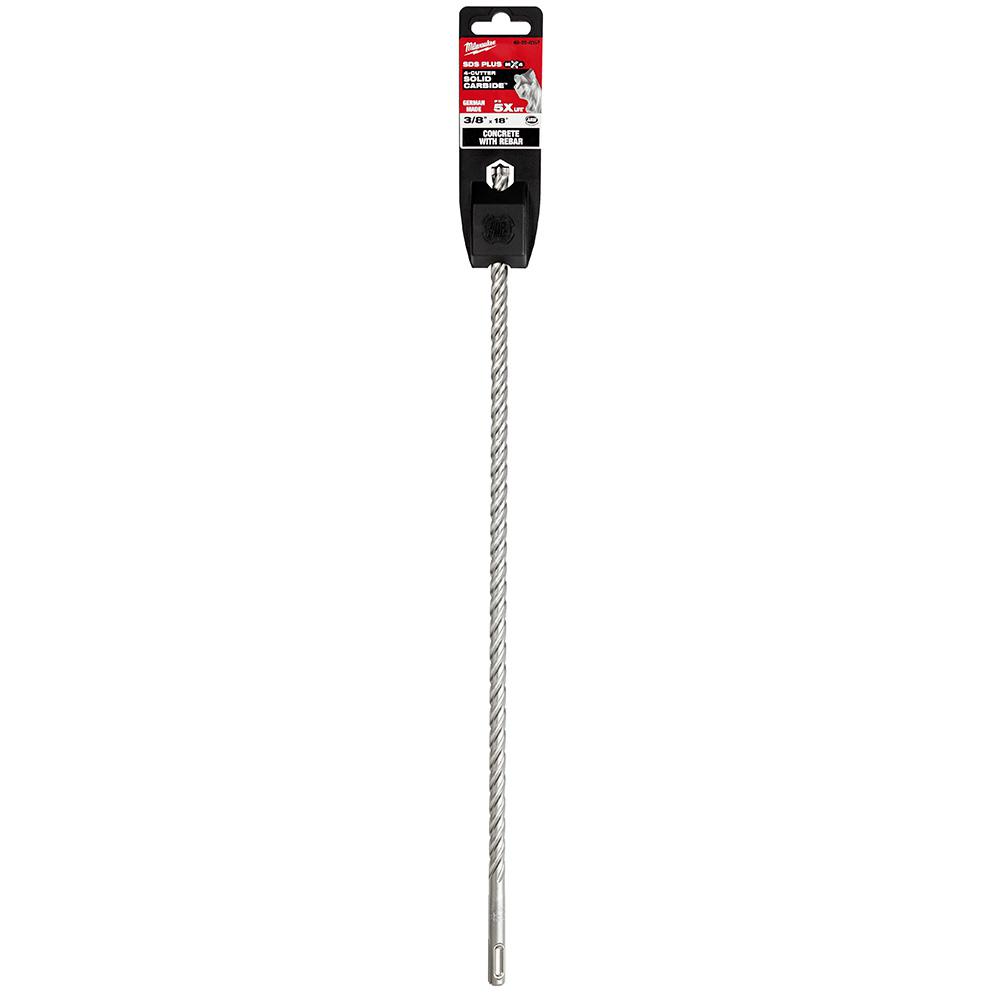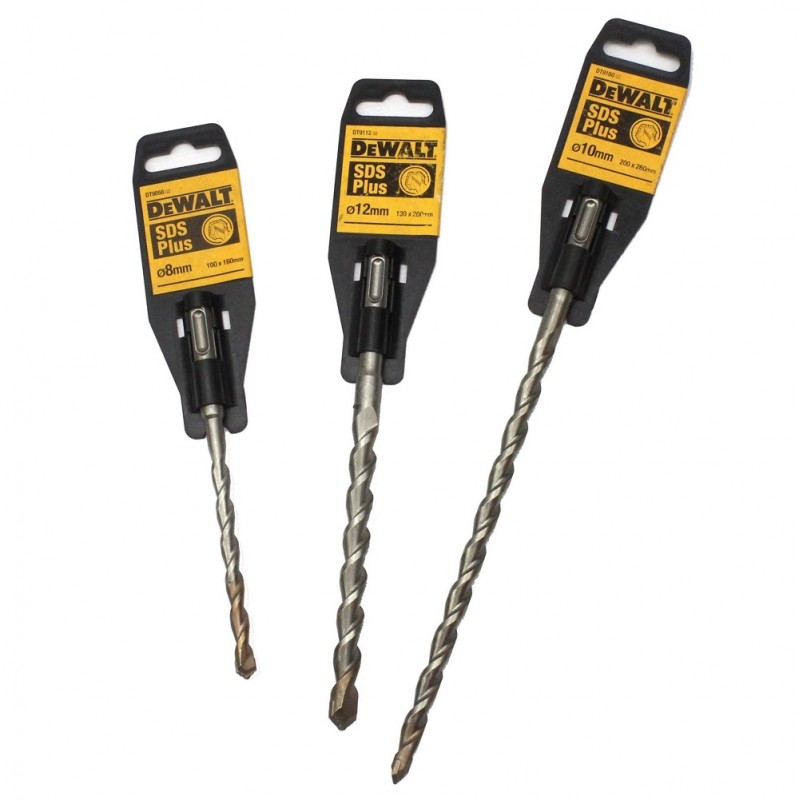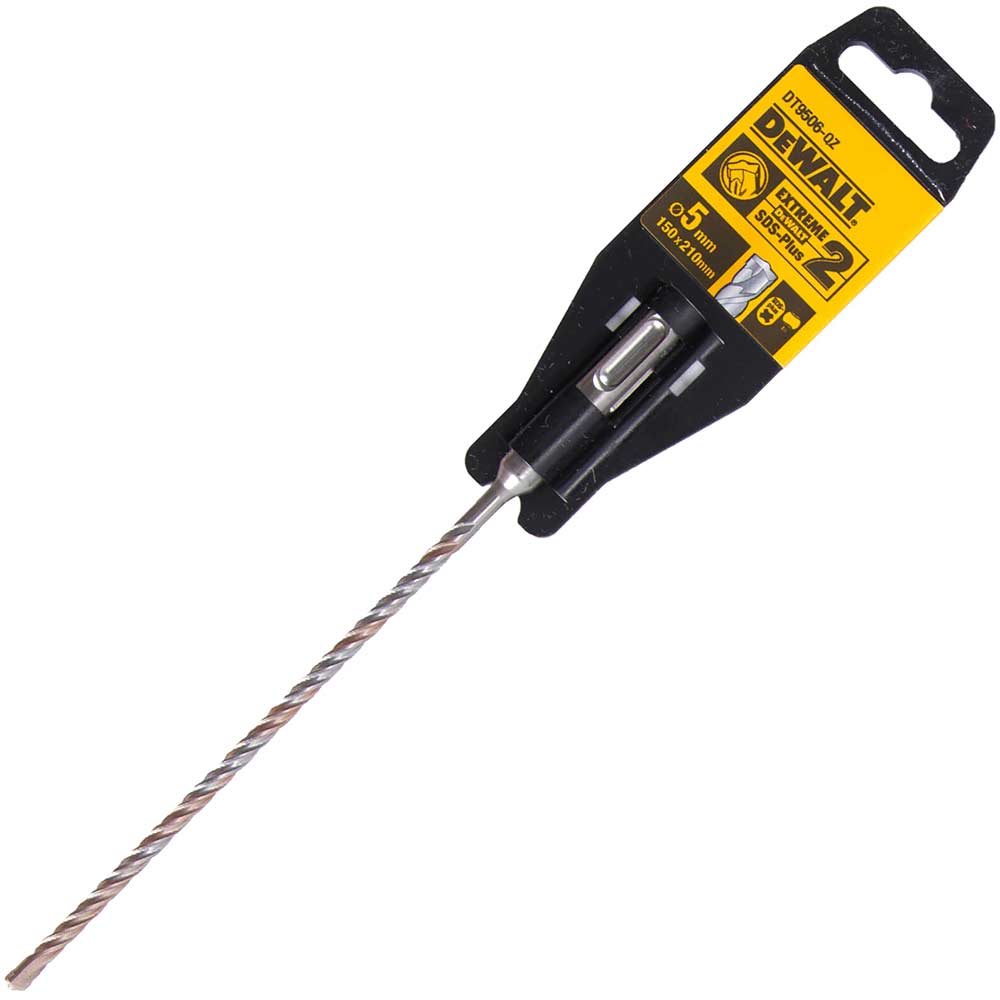
At a DIY level, this could be a very convenient feature, and as the bits are no more expensive than any other, they’re certainly worth trying. Some manufacturers have taken this into account and produced masonry drill bits for standard hammer drills that are claimed to use less energy. However, energy drain can be severe when doing even relatively minor masonry work. Today’s cordless hammer drills now rival that performance, and even some high-powered SDS drills are battery-powered. Hammer drills have traditionally been corded for more consistent power. They’re probably best for light-duty tasks. Manufacturers suggest using water for lubrication when cutting glass, marble, or granite, which might be a bit of a challenge on vertical surfaces. The idea is that they can drill through both tile (ceramic or glass) and then into the structure of the brick or block wall behind it. Instead of the usual straight-sided triangular tip, they are a curved arrow shape.

Multi-material drill bit sets are a fairly recent introduction and quite an interesting one. The latter are not the ones that are titanium coated because there are no cutting edges behind the chisel point, and thus no benefit to adding it. You can find these in a set that includes masonry drill bits, but it will be a combination set that includes some standard drill bits (for wood, plastic, and so forth) and some masonry drill bits. Titanium: A gold color often indicates a titanium coating, another material that will increase the life of your drill bits. They are good bits, but there’s nothing special about the “rock” aspect. It sounds impressive, but it’s just a trade name used by DEWALT. You might also see “rock carbide” used to describe some masonry drill bits. The downsides are that it’s more expensive and more time-consuming to sharpen, but we’d say it’s well worth having. Carbide is an extremely hard ceramic that significantly increases the life of the drill bit. Tungsten carbide: What’s certainly not a gimmick is the addition of a tungsten carbide tip (usually just called carbide) bonded to the HSS body. We don’t want to suggest that there’s anything wrong with these bits, but there’s no big advantage either. All steel is an alloy of carbon and iron, so the term “alloy” is really just a marketing gimmick.


We’ve seen other steel or carbon alloys mentioned, but these can be a little deceptive. High-speed steel: The main body of most masonry drill bits is high-speed steel (HSS), which is relatively low cost and very hard. SDS and SDS Plus are interchangeable (10-millimeter shank) but SDS Max is not (18-millimeter shank).īestReviews Home Improvement and DIY Expert Material Note that it’s vital that you choose the right type of SDS masonry drill bit. It’s impossible for the drill bit to slip even under heavy load. Shanks on SDS, SDS Plus, and SDS Max shanks are slotted. This allows a standard three-jaw drill chuck to grip them more firmly. Shank: The drill bit shank is usually round, though some have three flat sides and some are hexagonal. Manufacturers often claim their flute design is better than those of competitors, but we haven’t been able to detect any major difference. In fact, some masonry drills (typically those used for granite, slate, or natural stone) don’t have flutes at all, just a plain shaft. They are for clearing waste, drawing it backward out of the hole. The twists - properly called flutes - don’t actually do any cutting. Tip: Unlike standard drill bits, which have a point and cutting edges along the sides, all the action from a masonry drill bit comes from the broad triangular tip and shoulders, which are noticeably wider than the rest of the bit. While the bits can be considerably larger - and up to several feet long - the drill bit structure is largely the same. Heavy-duty versions fit into powerful Slotted Drive System (SDS) and rotary hammer drills.

The rapid impact added to rotation makes it the most efficient way to cut through brick, block, concrete, and so on. Most masonry drill bits are designed to be used in a hammer drill. If the bit snags, the drill itself can twist violently and potentially cause a nasty sprain. Make sure you’ve got a firm grip on the tool when drilling rough concrete or stone walls.


 0 kommentar(er)
0 kommentar(er)
